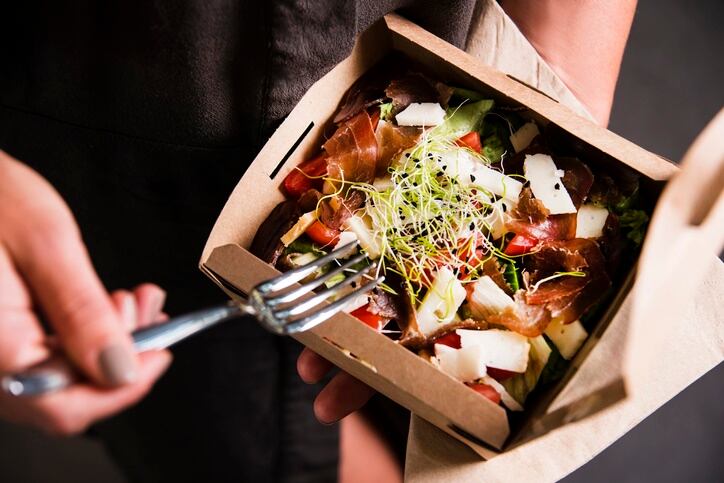The taste and nutrition company found Americans now eat 82% of meals at home – up from 75% from a decade ago. But according to its survey of more than 2,000 consumers in the US, only 31% are completely homemade meals – revealing a sizable marketing opportunity for restaurants, retailers and even some manufacturers to increase their ‘share of mouth’ by offering convenient solutions to ease meal prep or replace it entirely.
For restaurants in particular, the growth opportunity for providing at-home meal solutions through delivery is “staggering," according to Kerry.
For example, it found that Americans on average order-in five times per month and most orders are for two people. This equates to about $154 per month on typical two person deliver orders versus only $117 per month per capita for dining out.
To fully capitalize on this potential though, Kerry says restaurants need to focus on meeting consumers’ sensory expectations, offering a more diverse menu, catering to new dayparts and targeting the ideal delivery consumer.
Retailers and CPG manufacturers or meal kit providers can also learn from these lessons.
Deliver on sensory expectations
According to Kerry’s research, maintaining food quality for delivery “makes or breaks consumer loyalty,” and is one of the biggest challenges that restaurants face.
“Consumers want the ideal dine-in experience replicated at home, from look and feel, to texture and temperature, without compromise,” according to Kerry.
That said, Kerry also found that most consumers will cut restaurants some slack on delivery and “rationalize the deterioration of temperature, texture and overall experience.” Still, a third said that they wished restaurants could figure out how to deliver fried foods that stayed hot and 36% said they wished they could get in-store or in-restaurant quality meals at home via delivery.
Fulfilling these wishes and delivering a higher quality sensory experience could help restaurants and direct-to-consumer meal solutions secure consumer loyalty, according to Kerry. In particular, it found improving the quality of food could result in four additional orders per month – worth about $133 in the time period.
Boost check size with diverse menus
While 80% of delivery orders are for ‘typical menu items,’ consumers surveyed by Kerry said 20% of their orders were for new menu items that they had never tried before – “implying desire for variety and menu exploration for delivery,” according to Kerry.
In particular, 38% of consumers told Kerry they would like to see more healthy options. In addition, 39% of consumers said they’d like to see greater variety of food for delivery, according to the survey.
Kerry also sees potential for restaurants to boost the size of orders by offering specialty beverages – both hot and cold, according to the survey results.
Offer more options throughout the day
Restaurants also can increase orders by going beyond the typical dinner and late night fare, and offering more breakfast, lunch and snack options, according to Kerry.
“While 60% of all delivery orders are placed after 5 pm, typically for dinner, over 37% of delivery orders are placed between 11 am and 5 pm,” according to Kerry. It adds that many of the daytime orders are on weekdays, suggesting office workers are looking for convenient options.
Late-night snacking orders placed after 8 pm also are gaining traction among younger consumers, the research adds.
Expanded delivery times and menu options will help restaurants capture the X% of consumers who say that they order food for delivery in the spur of the moment, according to Kerry. But it also could help them appeal to the increasing number of consumers who want to pre-plan deliveries hours or even days in advance, it adds.
Target heavy users
Finally, Kerry says that restaurants and direct-to-consumer meal solution manufacturers can increase their share of market by fine-tuning their marketing to better target consumers predisposed to ordering food.
Kerry’s research revealed three main categories of delivery users including ‘traditionalists,’ ‘followers’ and ‘frontrunners.’
Traditionalists are light users who order delivery one or two times a month “out of sheer lack of time” or because they want to take advantage of a deal or discount.
Followers, are moderate users of delivery – ordering it three to five times a month. Like traditionalists, they do it as a timesaver, but also because they want to indulge or treat themselves. This group is diverse across demographics, but a commonality is the desire among 29% of them for customizable solutions for their delivery orders.
Finally, frontrunners, order delivery six or more times a month and do so at different times of day and from different parts of the menu. This group represents about 25% of the delivery consumer population and are more likely to be older millennials men with children.

